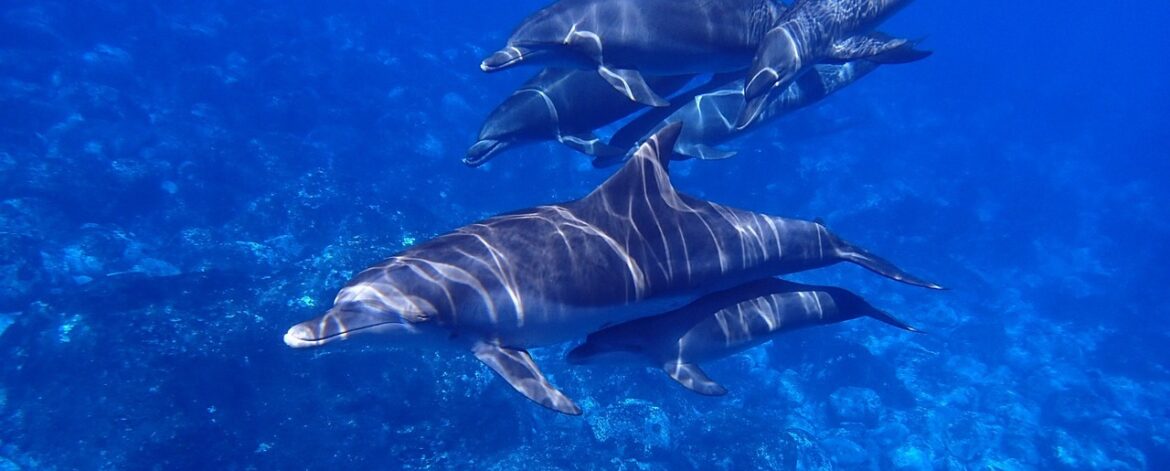Dolphins are one of the most intelligent and beautiful creatures in this world. They are marine mammals that are closely related to whales and porpoises, and belong to the family Delphinidae.
Dolphins are found worldwide, in oceans, seas and rivers. It is estimated there are between 30 to 40 species of dolphins.
Types of Dolphins
- Common Dolphin
- Bottlenose Dolphin
- Commersons Dolphin
- Dusky Dolphin
- Orca
- Spotted Dolphin
Dolphin Facts
Here are some interesting facts to know about dolphins:
- The maximum age for bottlenose dolphins is between 40 and 50 years.
- Fish and squid are the diet of the common dolphin.
- On average an adult dolphin will eat 4-9% of its body weight in fish.
- There are between 30 to 40 species of dolphins.
- Dolphins are highly social, playful, curious and intelligent.
- The largest dolphin species is the orca.
- Mother dolphins produce milk that is extremely rich in fat, up to 50 percent.
- Like bats, dolphins use echolocation to navigate and hunt.
- Dolphins have excellent vision and well-developed eyes.
- Five dolphin species live in rivers.
Anatomy
Dolphins have a streamlined fusiform body, adapted for fast swimming. Dolphins breath air through their blowhole, which is located at the top of their head. Some dolphins must rise to the surface to breathe every 20 to 30 seconds, while other dolphin species can hold their breath as long as 30 minutes. Dolphin coloration varies from gray to white and black. The dolphin’s senses are very highly developed, with acute hearing, eyesight and sense of touch.
Behavior
Dolphins are highly social, playful, curious and intelligent. They are fast learners and can learn to understand language-like commands. Dolphins are living in pods (“schools”) of up to a dozen individuals.
Dolphins communicate using a variety of clicks, whistles and other vocalizations. They also use ultrasonic sounds for echolocation. Each dolphin has its own signature whistle to identify itself.
Dolphins cannot go into a full deep sleep, because then they would suffocate. Dolphins sleep by resting one half of their brain at a time so that one eye is always open.
Feeding
Dolphins are carnivores eating mostly fish and squid and sometimes crustaceans. Their teeth are conical in shape. Dolphins feed mainly on schools of prey. On average an adult dolphin will eat 4-9% of its body weight in fish.
Reproduction
The dolphin gestation period varies per species; it can range from 9 to 17 months. The female gives birth to one calf; twins are very rare. When a baby dolphin is born, it raises to the surface of the water with the help of its mother for its first breath.
The dolphin calf suckles from its mother for up to 4 years. The calf will stay with the mother dolphin until it is between 3 and 8 years old.

